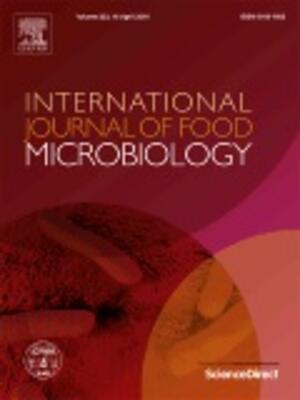
Evaluating the impact of heat stress as measured by temperature-humidity index (THI) on test-day milk yield of small holder dairy cattle in a sub-Sahara African climate
Abstract
This study evaluates the effect of heat stress on milk production and describes the pattern of response of milk yield to increasing heat load, using temperature-humidity index (THI) on test-day milk records of small holder dairy cattle herds in the sub-Saharan African climate of Tanzania. Climate data obtained from aWhere, an agricultural weather data platform (http://www.awhere.com) was analysed with 14,367 first lactation test day milk records of 3511 dairy cows collected between 2016 and 2019. THI was calculated from daily maximal temperatures and daily minimum humidity. Three sets of analysis were performed. In the first and second analysis, two mixed effect repeatability models were fitted with THI treated as a categorical variable grouped into 5 classes (THI1= [61 - 66], THI2= [67 - 71], THI3= [72 - 78], THI4=[79 - 81], THI5=[82 - 86]), to obtain least squares estimates of THI effect on milk production, and as a continuous variable within THI classes to identify THI thresholds at which milk yield started to decline. In the third analyses, one quadratic polynomial regression (POL) and three regression spline functions namely piecewise linear spline function (PLF), natural splines function (NSF) and cubic splines function (CSF) were fitted to determine the average effect of THI on milk yield in the population and describe the pattern of response of milk yield to increasing head load.
The results show that heat stress reduced milk yield by 4.16% to 14.42% across THI groups, with daily milk yield being the highest in THI1 (7.40±0.39 litres) and the lowest in THI4 (6.33±0.32).
Regression coefficients within groups showed significant daily milk yield decrease in THI2 (-0.09) and THI3 (-0.06), but not for other THI classes, indicating that cows experienced heat stress between THI values of 67 and 76 and milk loss plateaued afterwards, suggesting that the animals acclimatized to heat stress conditions beyond THI value of 76. At the population level, THI and its squared term were significantly negatively and positively (-0.61, 0.004) associated with milk production, indicating a non-linear relationship between milk yield and THI. The CSF model showed better goodness of fit and predictive ability than other models for predicting future population response of milk yield to heat stress in small holder dairy farms in Tanzania.
Herd management strategies and animal husbandry measures are needed in small holder dairy farms in Tanzania to minimize the impact of heat stress on milk yield and income of the farmers.
Citation
Ekine-Dzivenu, C.C., Mrode, R., Oyieng, E., Komwihangilo, D., Lyatuu, E., Msuta, G., Ojango, J.M.K. and Okeyo, A.M. 2020. Evaluating the impact of heat stress as measured by temperature-humidity index (THI) on test-day milk yield of small holder dairy cattle in a sub-Sahara African climate. Livestock Science 242:104314.








